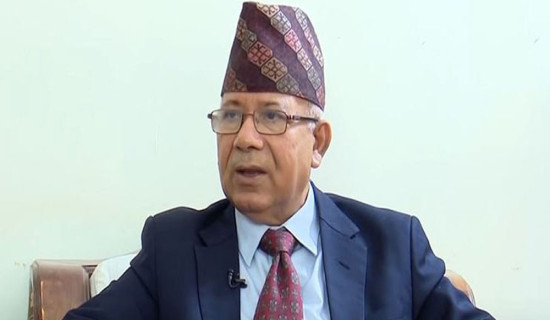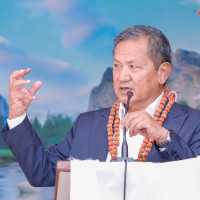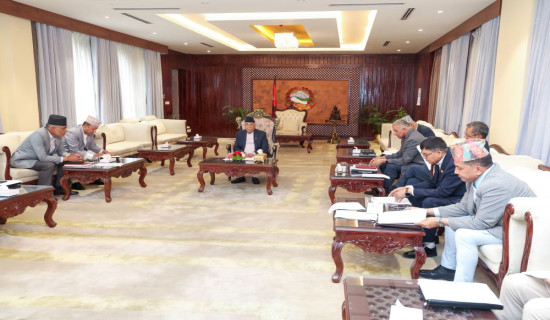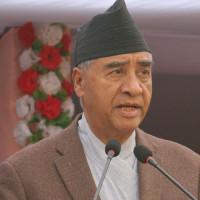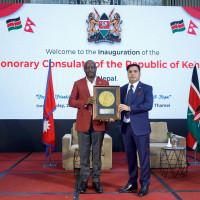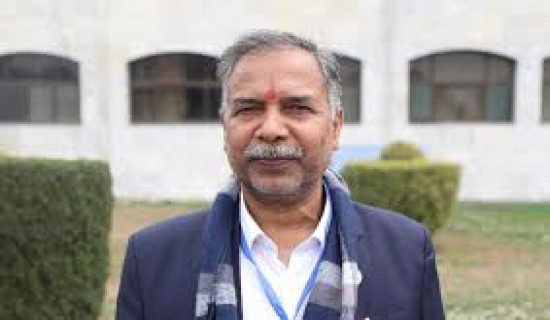- Friday, 6 June 2025
Women Journos Face Increased Threats
The safety of journalists is essential to safeguarding democracy. Journalists risk their lives to uncover the truth, often working in dangerous and hostile environments, whether in times of war or peace. Protecting their safety not only saves lives but also defends press freedom, which is vital for ensuring the public's access to accurate information. As incidents of mass human rights violations continue to rise — such as the Taliban’s ongoing suppression of women’s rights in Afghanistan, the war in Ukraine, and the devastating loss of live in Gaza — the need to uphold press freedom and support journalists in their mission to reveal the truth has never been more urgent.
The recent escalation of conflict between India and Pakistan, following the terrorist attack in Pahalgam, has once again put journalists in the crossfire. Anuradha Bhasin, a prominent Indian journalist based in Jammu and editor of the Kashmir Times, has been working in journalism since 1989. Over the years, she has received both accolades and attacks for her fearless reporting. Following the terrorist incident in Pahalgam and India’s subsequent Operation Sindoor, she has faced renewed hostility, including widespread trolling and doxxing, particularly for her critical stance on India's foreign policy.
Trolling and doxxing
Women journalists, in particular, face heightened threats in the line of duty. There is ample evidence that women in journalism and media are increasingly targeted, a trend that has worsened with the rise of online journalism. Both offline and online gender-based violence (GBV) is on the rise. Offline threats include physical assaults, sexual violence, and even murder, while online threats — often termed Technology-Facilitated Gender-Based Violence (TFGBV) — include trolling, doxxing, sexist hate speech and rape threats.
Nobel Laureate Maria Ressa, CEO and co-founder of Rappler, captures this reality: “The easiest part is dealing with the impact of online violence and disinformation on me. I just see the impact on the world, and I don’t know why we’re not panicking,” she said in The Chilling, a 2021 UNESCO report produced with the International Centre for Journalists (ICFJ). The study underscores how online violence — ranging from doxxing to death threats — is often part of broader disinformation campaigns aimed at eroding public trust in investigative journalism.
On May 19, 2025, Media Action Nepal held a regional networking meeting in Kathmandu titled Feminist Pathways to Journalist Safety, in collaboration with ARTICLE 19 and Global Affairs Canada. Journalists from across South Asia shared their experiences of gendered violence, which continues to grow as democracy in the region becomes increasingly fragile and threatened. ARTICLE 19 has long worked on improving the safety of women journalists. Its recent report, Equally Safe: Towards a Feminist Approach to the Safety of Journalists, reveals that between half and two-thirds of women journalists globally have experienced gender-based violence, harassment, or abuse. The research highlights that women from marginalised groups are disproportionately targeted. Perpetrators include not only external actors but also governments, colleagues, and even family members, most of whom face little accountability.
The report stresses the need for an intersectional feminist approach to journalist safety, taking into account overlapping systems of discrimination. Women's right to freedom of expression includes the right to share ideas and opinions freely, both online and offline, without censorship, fear, or being pushed out of public discourse. The report reiterates that women journalists are not a monolith; the threats they face vary depending on their race, nationality, sexual orientation, region, and other intersecting factors. Those already marginalised experience harsher abuse and greater risk. Despite this, women are still expected to be resilient and creative in navigating these threats — a grim reflection of the global state of democracy and human rights.
An intersectional approach is crucial to improving safety for all women journalists, everywhere. UNESCO’s 2021 report The Chilling is based on research by 24 international scholars from 16 countries. It includes 173 interviews and two large-scale data studies analysing over 2.5 million Facebook and Twitter posts directed at two high-profile women journalists — Maria Ressa in the Philippines and Carol Cadwalladr in the UK. Maria Ressa was awarded the 2021 Nobel Peace Prize jointly with Dmitry Muratov for their efforts to safeguard freedom of expression, which is a precondition for democracy and lasting peace.
Online violence
The findings of The Chilling expose a vicious and coordinated online violence campaign that seeks to silence women journalists and discredit their work. Women journalists of colour, religious minorities, and those from LGBTQ+ communities face even more frequent and vitriolic attacks. It disclosed that 64 per cent of white women journalists experienced online violence, compared to 81 per cent of Black, 86 per cent of Indigenous, and 88 per cent of Jewish respondents. Among LGBTQ+ journalists, 88 per cent of lesbians and 85 per cent of bisexual women faced attacks, compared to 72 per cent of heterosexual women. Arab women were found to be at even greater risk of experiencing offline violence connected to their online presence.
Together, the 2021 UNESCO-ICFJ report and the latest findings from ARTICLE 19 provide irrefutable evidence that women journalists are increasingly under attack both online and offline. Journalists like Anuradha Bhasin, Maria Ressa, and Carol Cadwalladr, among many others, must be protected and supported. International journalist networks and global institutions must act decisively, using all available mechanisms to ensure justice and accountability. The global community must not tolerate impunity for attacks against journalists, as doing so endangers both democracy and human rights.
(Sharma is a senior journalist and women’s rights advocate. namrata1964@yahoo.com or on X @NamrataSharmaP.)



